If you’re planning a trip to Kuala Lumpur, visiting the Batu Caves is an absolute must. This iconic site, with its towering golden statue of Lord Murugan and vibrant rainbow steps, is not just an Instagram hotspot—it’s a place of deep cultural and religious significance. In this Batu Caves Guide, I’ll walk you through everything you need to know before you go, from the history of the caves to practical tips on timing, transport, and avoiding those notorious monkeys. Whether you’re drawn by the stunning limestone caverns, the temples, or the challenge of climbing 272 steps in Malaysia’s humidity, this guide will help you make the most of your visit.
Just so you know, this post contains affiliate links. If you book a tour, hotel, or buy something through one of these links, I may earn a small commission—at no extra cost to you. It helps me keep this blog running and full of travel tips. Thanks for the support!
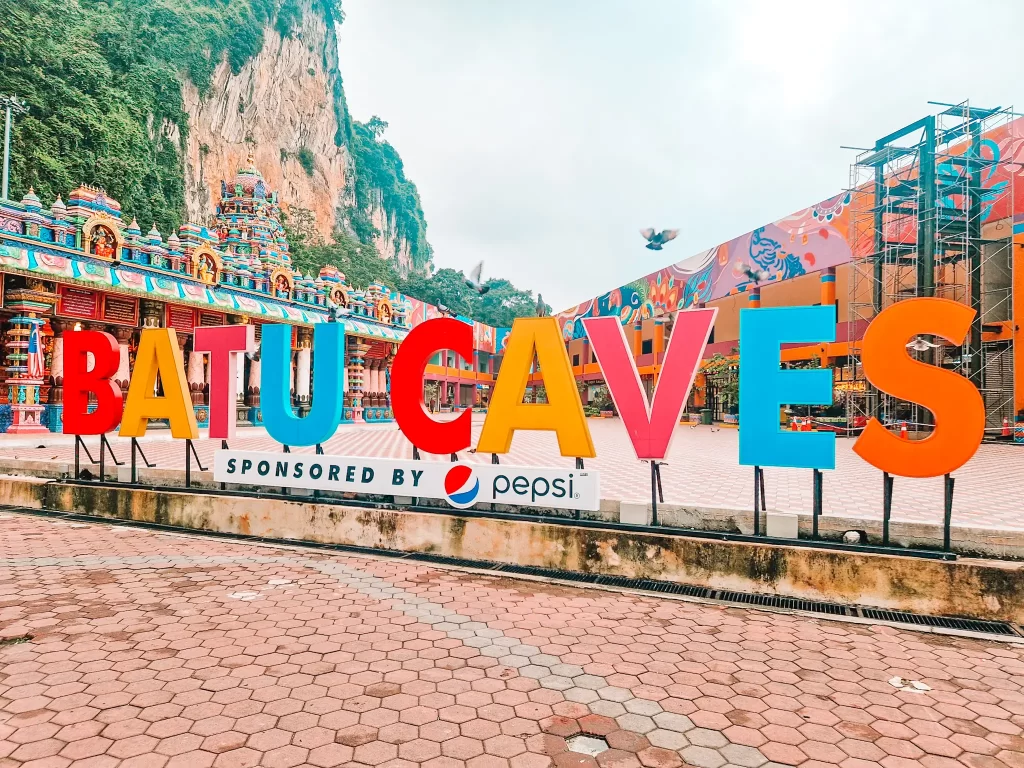
Key Takeaways
- Visit early to avoid crowds, heat and monkeys
- Make sure to dress appropriately and be respectful of people worshipping
- Most people only visit the main cave and this takes about 2 hours plus transport time
Are the Batu Caves worth visiting?
The Batu Caves are easily the most famous tourist site in Kuala Lumpur, and they’re well worth a visit on any trip to Kuala Lumpur. While there are other cave temples in Malaysia, for example near Ipoh, the Batu Caves are by far the most famous.
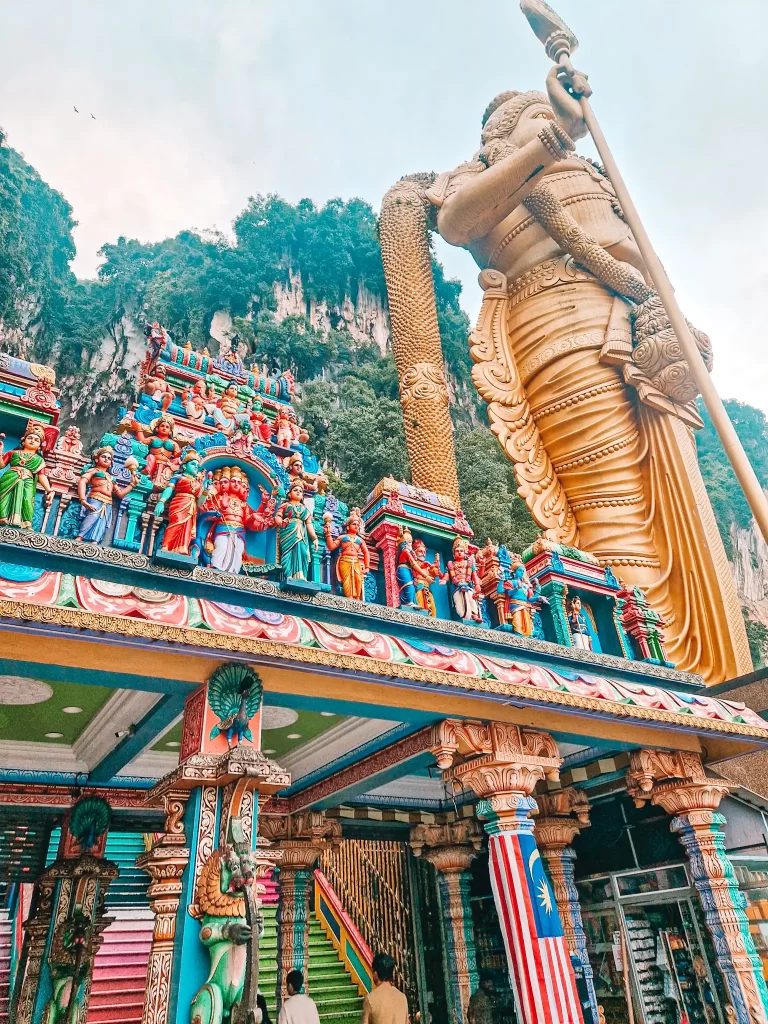
Though the caves aren’t difficult to visit, there are a few things you should know before you go. This blog will talk you through the key questions, based on what I wanted to know before my visit!
History of the Batu Caves
The caves were originally used as a shelter for the indigenous Temuan people, and later for the excavation of bat guano, which can be used to make gunpowder.
Unlike Hindu religious sites in Bali or near Yogyakarta, they are relatively modern. They first became a religious site in 1891, when a Hindu temple dedicated to Lord Murugan was established inside. The first statue of Lord Murugan was created inside at this time. The first concrete steps were put in place in 1940, as the original wooden steps had begun to deteriorate. The giant golden statue of Lord Murugan, one of the largest in the world, was constructed in 2006, while the stairs received their rainbow hue in 2018.
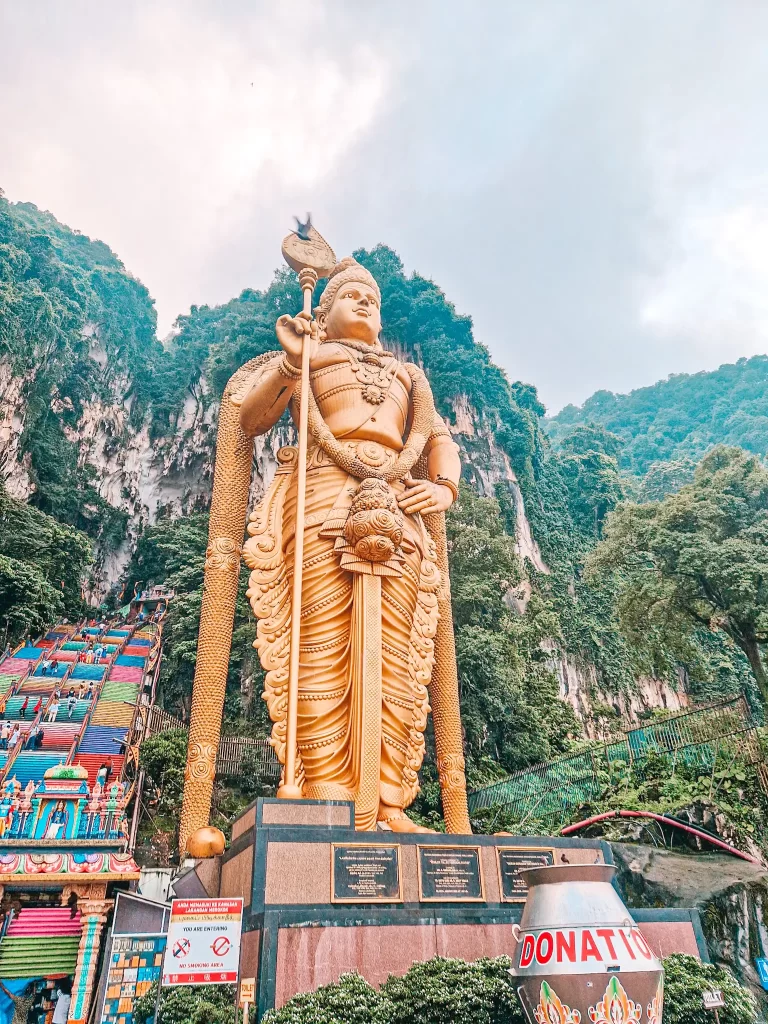
Opening hours
The caves are open from 7am-9pm. The Batu Caves–Pulau Sebang Metro Line to get you to the caves starts at 5am, so you can use public transport to arrive at 7am if you’re keen to make an early start.
What time of day to visit
You’re going to want to start as early as you can for your trip to the Batu Caves, as this fascinating destination gets very busy later in the day.
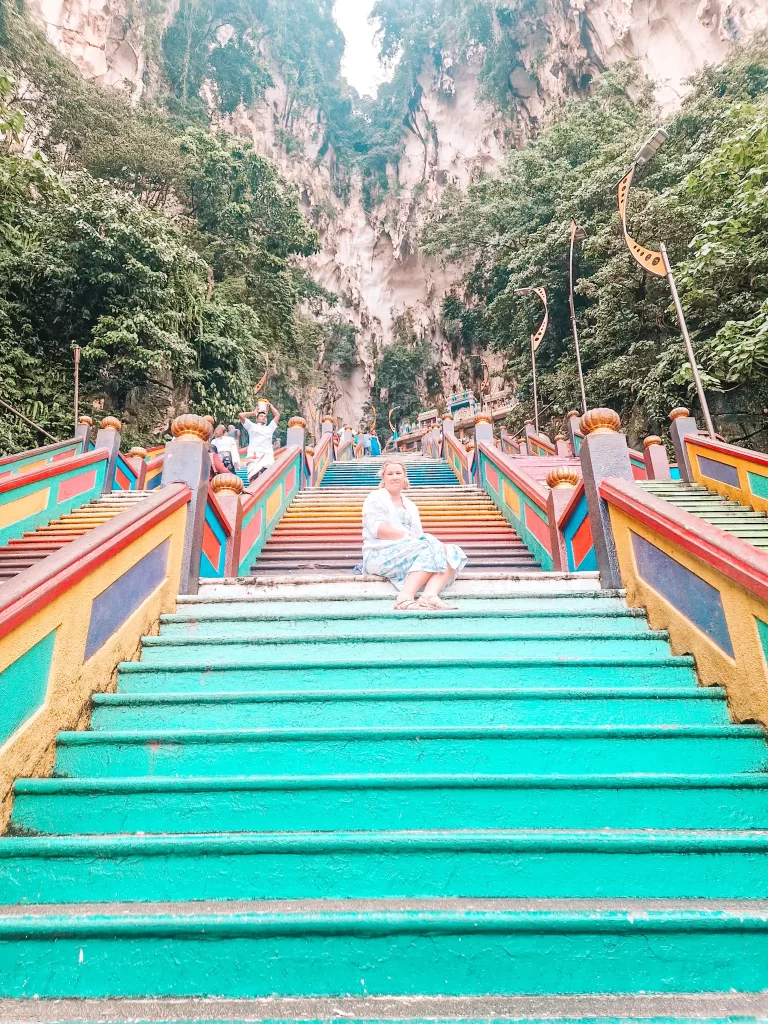
An early start gives you the best chance of getting those amazing photos of the rainbow stairs as you climb. Add to that the increased heat as you climb those 250 stairs, plus the fact that there are more terrifying monkeys later in the day, and you’ll agree an early start is best.
How much time do you need to visit the Batu Caves
Your visit length depends on how many caves you plan to explore and your fitness level.
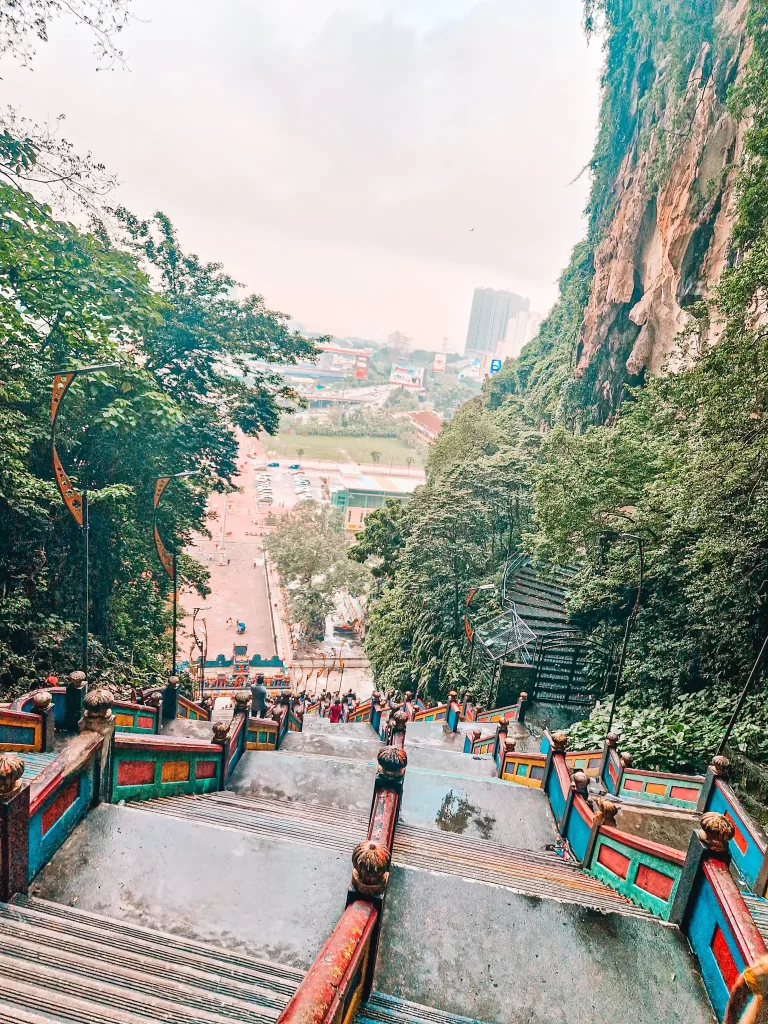
If you are planning to visit just the main temple, and you are reasonably fit, I would factor in about 2 hours for your visit, plus transport time. This will give you time to take photos on the stairs, to see the main cave and to have a quick refreshing drink at the end.
If you are planning to visit some of the less popular caves, your visit could easily cover half a day or more.
How much does it cost to visit the Batu Caves
The main cave temple is free to enter. There are other caves nearby with entrance fees, including the Cave Villa (RM15 for non-Malaysians) and the Ramayana Cave (RM5).
How to get to Batu Caves
Like Singapore, Kuala Lumpur has an excellent public transport system, and the Batu caves are easily reachable via metro. The KTM Kommuter trains go to Batu, which is the end of the Batu Caves–Pulau Sebang Line. These trains run about every half an hour, so plan your journey accordingly. The Batu station is about 5 minutes walk from the caves – just follow the crowds.
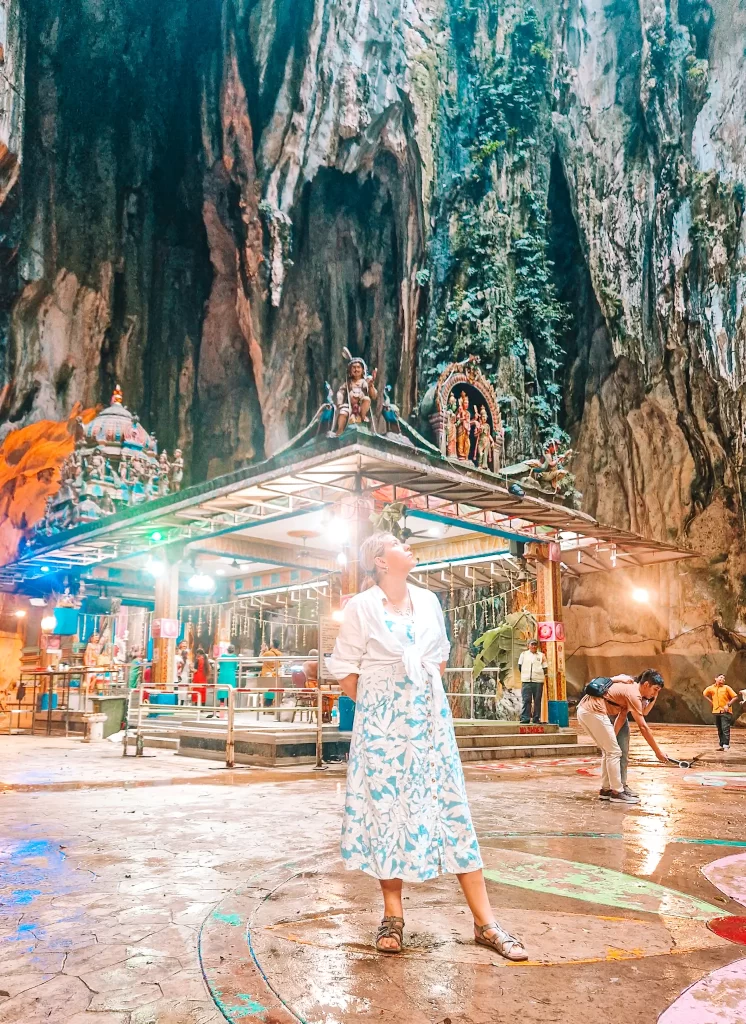
To get to the KTM Kommuter trains, you’ll need to go to KL Sentral or another stop on the line that’s near your hotel. Check your nearest stop here.
You can also do what I did and take a Grab. As I was going early in the morning, and Batu is out of the city, this cut my transport time from well over an hour to around half an hour as we were going away from the traffic. The extra time in bed felt well worth it!
What is the dress code for the Batu Caves
Batu is a religious site. This means that you should dress appropriately, covering your shoulders and knees. This applies for men and women, but as always, particularly for women. Consider bringing a sarong and/or shawl if your outfit for the rest of the day is more revealing.
What to visit at the Batu Caves?
Most people visiting Batu will only visit the main temple cave, which is what I did.
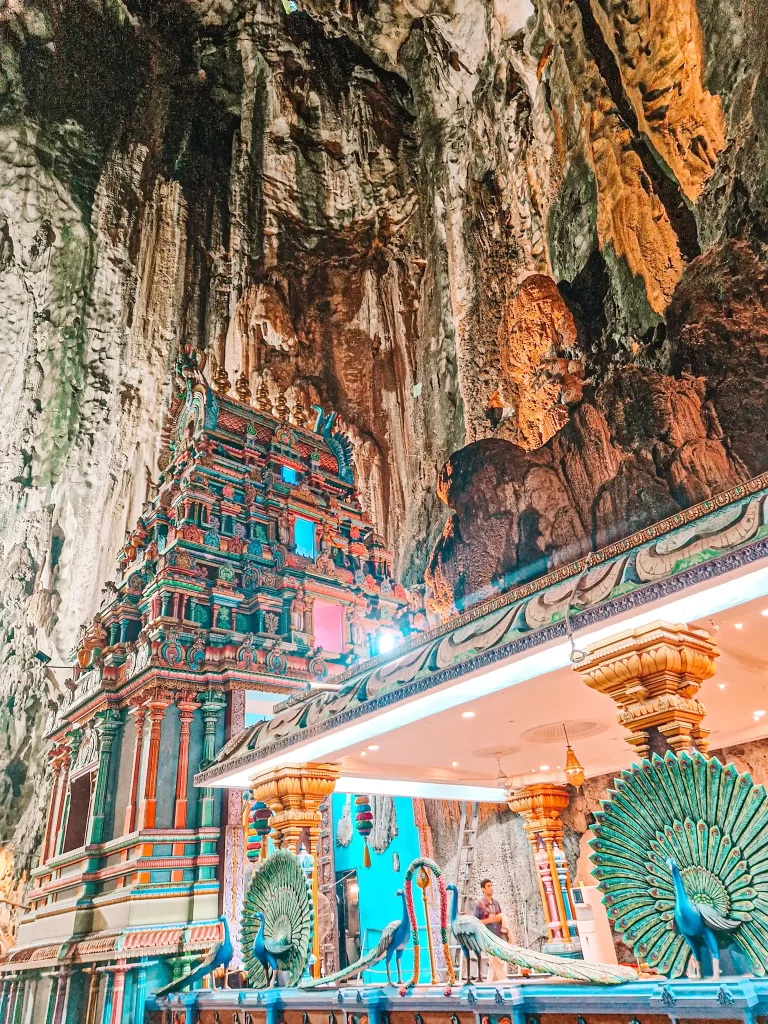
The cave is an attraction in itself. However, within the main cave, there are a couple of different Hindu temples built into the rock. The biggest is not available to the public to enter, as it is reserved for worship.
You can also climb more stairs to very top of the cave, which is like a cenote and open to the air. This provides some beautiful photos.
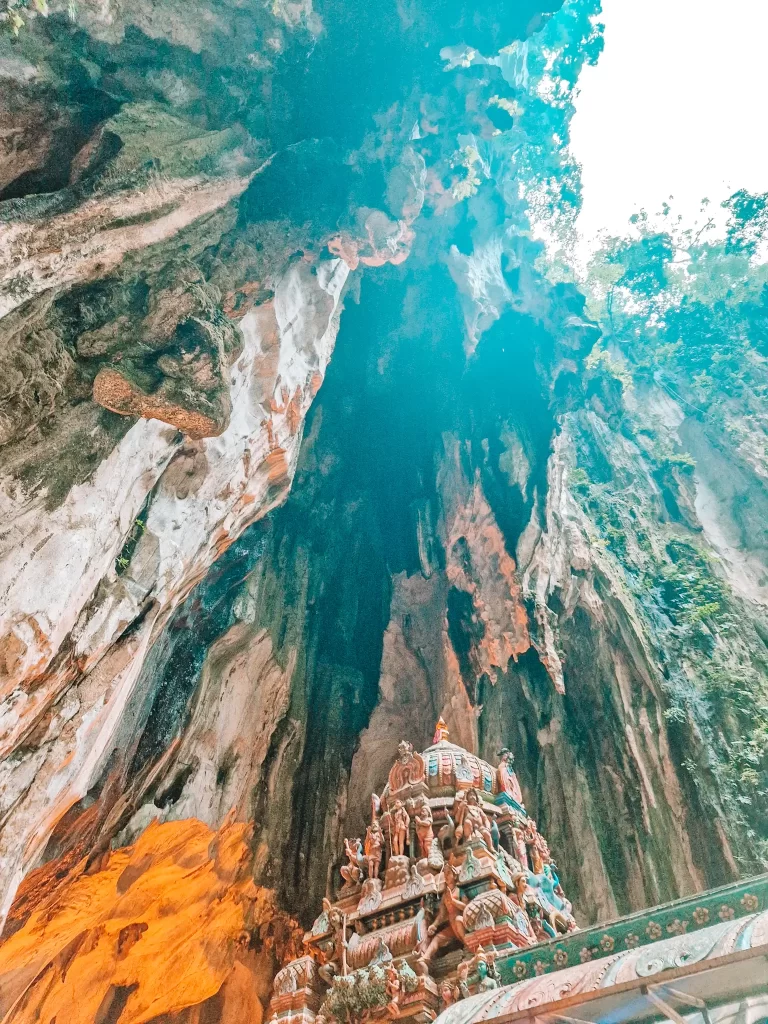
Once you’ve visited the main cave temple, I would suggest moving on to the next item on your itinerary if you only have a short amount of time in Kuala Lumpur. However, if you’re keen to spend more time at Batu, there are other caves to visit, including the Villa Cave, a private attraction which offers photo ops with animals and has been criticised for the poor treatment of these animals. You can see this in the Google Reviews, and as a result it is probably best avoided. However, the Ramayana cave which has detailed murals presenting the story of the Ramayana, is much less controversial and has strong Google Reviews.
What to bring to the Batu Caves
This might seem like a silly question (or wild overplanning!) for visiting a site in a city, but there are a couple of things you should consider when planning your trip to the Batu cave
- Bring water. Even first thing in the morning, the humidity is high and the climb will make you thirsty. There are shops around to buy extra water if you need, but worth starting with your own.
- Consider how your bags will appear to monkeys. Don’t bring plastic bags and don’t bring visible (or smellable) food or snacks. It could be worth taking a rucksack that you can put everything inside (e.g. your waterbottle and phone).
- Unlike the peaceful dusky leaf monkeys in Penang, the Batu monkeys are intense. If you want your phone out on the steps, consider bringing a strap or other way of attaching it to you in case a monkey decides they’re keen on a new iphone.
Top tip: the most popular isotonic/electrolyte drink in Malaysia is called 100Plus and it’s available everywhere! Consider a 100Plus to rehydrate after your visit (that’s what I did).
What to expect at the Batu caves?
There are a few things I wish I’d known about my visit to Batu before I visited!
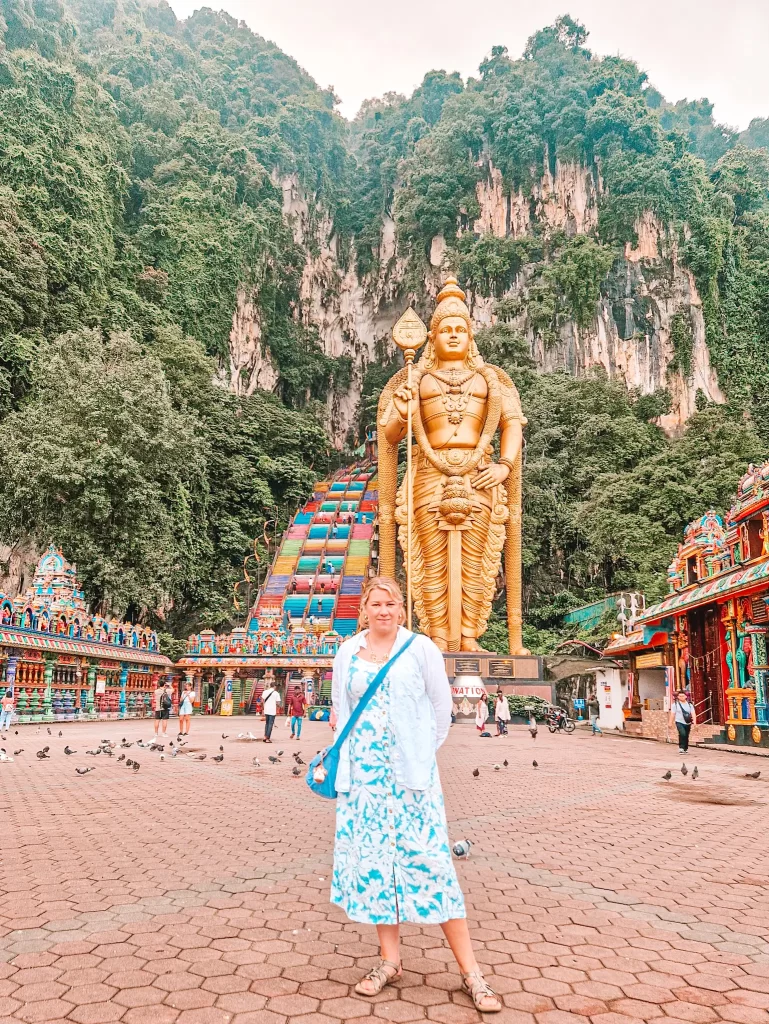
- Batu is still a functioning religious site, and particularly early in the morning, there are likely to be people visiting to pray. Be respectful and allow people space, and consider whether it’s appropriate to film or photograph people worshipping if they haven’t directly consented.
- Earlier really is better for Batu as it meant that I was able to get really good photos on the way up without the risk of my phone being stolen by monkeys and with fewer people!
- When I arrived around 8am, there were no monkeys. By the time I was descending at 9am, there were monkeys everywhere. Like the semi-wild orangutans I saw in Sumatra, the monkeys at Batu are fully used to humans, but unlike the orangutansn, they are very aggressive. They run up and down the bannisters looking for things to steal, and I wasn’t the only one really struggling with my fear. There also wasn’t anyone around to help e.g. staff, as there have been in other places I’ve seen aggressive monkeys (for example, when an orangutan decided to visit the Sun Bear Conservation Centre in Borneo, staff were proactive in helping to defuse the situation).
- I was partly prepared for the monkeys, but not for the pigeons. There were huge flocks of pigeons everywhere. If, like me, you’re not a pigeon fan, mentally prepare yourself in advance.
- It’s very damp and humid within the caves themselves. Anything you wear is going to get very, very damp and sweaty. Take this into account when you are planning the rest of your day!
A visit to the Batu Caves is more than just a photo opportunity—it’s a chance to step into a living piece of Malaysia’s history and Hindu culture. From the breathtaking views at the top to the intense energy of the monkeys below, every part of the experience is unforgettable. Hopefully, this Batu Caves Guide has given you all the essential tips to navigate your visit smoothly, whether you’re arriving at sunrise for the best light or preparing for the humid trek up those famous stairs. So grab your water bottle, keep your belongings close, and get ready to experience one of Kuala Lumpur’s most remarkable landmarks.





[…] out my guide Batu Caves: Everything you need to know for more detailed information on visiting this amazing attraction. […]
[…] spending a day to enjoy the best of Malaysia’s capital city, including the incredible Batu Caves. There are also direct flights to Sandakan from Kota Kinabalu, the largest city in Borneo, where […]